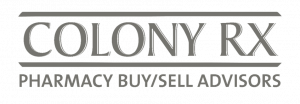Selling a Pharmacy with Large Working Capital Requirements
Owners need to be aware that large working capital requirements can be an obstacle to salability or, more likely, to maximizing the value of a pharmacy. We see this especially in specialty stores, but even stores that have lots of Humira, insulin, Ozempic or other expensive drugs.
Our first piece of advice on this issue, beg and bully your wholesaler to give you and your buyer 30 day payment terms. They are hard to get, but they are available.
Why are large working capital requirements an obstacle to a possible sale of a pharmacy? One way or another, almost all business acquisitions are financed. Typically a prospective buyer will need to have a down payment. It only makes sense that as the amount of cash required for a down payment increases, the buyer pool decreases. For instance, there are more prospective buyers for a $500,000 business where a $150,000 down payment might be required, than for a $1,500,000 business where a $500,000 down payment might be required.
In addition to the down payment, buyers also need to have sufficient working capital to survive the cash crunch created in the first 60 – 90 days when customer accounts receivable collections may take 45 – 90 days but the buyer needs to maintain strong relationships with vendors, potentially paying them in 30 days or less. That need for additional cash reduces the pool of prospective buyers. In addition, if the prospective buyer finances the working capital needs with a line of credit, the interest expense on the working capital loan needs to be imputed into the recast financial statements, thus reducing the level of Seller’s EBIDA on which the value of the business is based.
Working capital interest should not be an add-back to SDE
Ordinarily, interest expense is added back to EBIDA, but working capital interest is handled differently. When the nature of the business model requires a buyer to maintain a working capital loan, working capital interest expense is unavoidable and needs to be considered in the calculation of the buyer’s future cash flows. This lowers the value of the business.
Drivers of working capital needs
The three primary drivers of the need for a large amount of working capital are (1) long collection periods on accounts receivable (thanks to PBMs); (2) inflexible payment terms from vendors/suppliers (the big three RX wholesalers); and (3) the need to carry large amounts of inventory – or expensive inventory.
Small business owners need to be aware that large working capital requirements can be an obstacle to salability or, more likely, to maximizing the value of a business. By working to (1) reduce accounts receivable collection periods; (2) improve vendor /supplier terms; and (3) find ways to reduce inventory requirements, you can improve the prospects of your financial freedom from the sale of the business.
How large are your working capital requirements? If you don’t’ know, give us a call and we will tell you.



